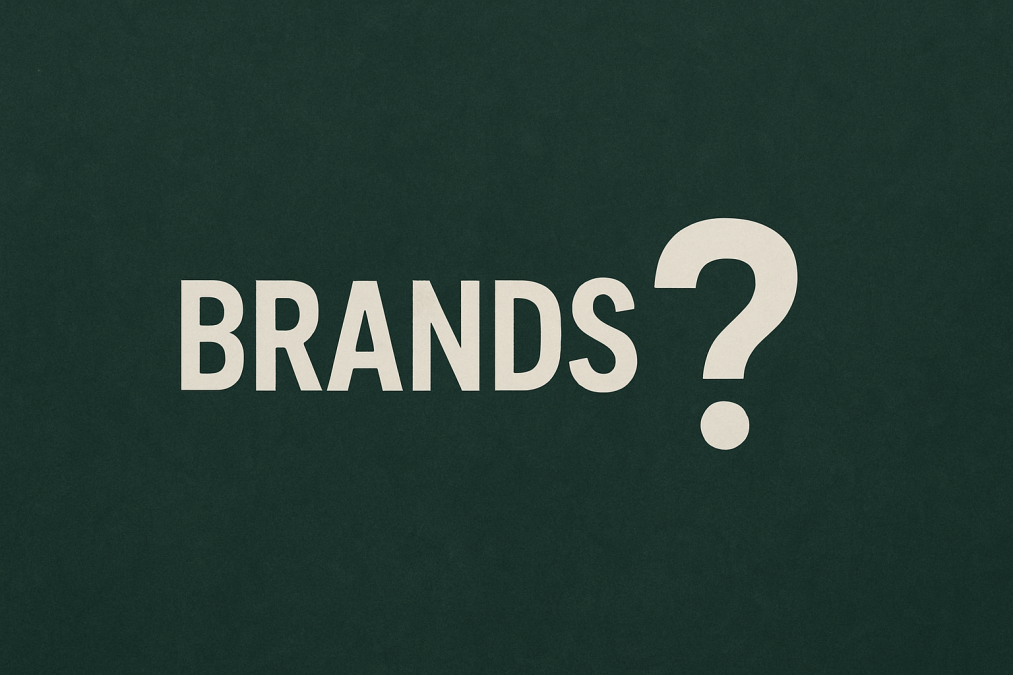A logo or slogan isn’t enough in today’s chaotic digital landscape, where the average consumer sees thousands of brand messages daily. If you want your brand to live in someone’s heart, not just in their feed, it needs real, emotional, soul-tugging meaning.
But what does “meaning” even mean in the context of branding? And why does it seem to be the differentiator between brands that merely survive and those that thrive?
This isn’t about fluff. This is about building brands that last—brands that move people.
Let’s unpack it all.
Chapter One: The Era of Emotional Branding
If you’re building a brand in 2025, you’re not just competing on price, features, or even design. You’re competing for emotional real estate.
Ask yourself: When did you last buy something because it “felt right”?
Chances are, the product you chose aligned with a value, a story, or an identity you aspire to. That’s branding with meaning.
Big brands know this: Nike doesn’t sell shoes; it sells grit and perseverance. Apple doesn’t sell phones; it sells creativity, rebellion, and status. Meaning is baked into the product, the ads, the unboxing, and the language.
Consumers—especially Millennials and Gen Z—gravitate toward brands that reflect who they are or want to become.
So the question becomes: what does your brand mean to them?
Chapter Two: What Is “Meaning” in Branding?
Let’s be clear: “meaning” isn’t about slapping a mission statement on your homepage and calling it a day.
Brand meaning is the emotional and cultural significance your audience attaches to your brand over time.
It’s how people feel about you.
It’s the story they tell themselves when they interact with your brand.
It’s the conversation that happens when you’re not in the room.
Meaning can be:
- A personal value – sustainability, inclusivity, freedom.
- A lifestyle – minimalism, adventure, luxury.
- A cultural stance – progress, rebellion, tradition.
The key is that you don’t fully control your brand’s meaning—your audience co-creates it with you. You must show up consistently with a clear intention and allow people to connect on their terms.
Chapter Three: Why Meaning Wins (Over and Over Again)
Let’s look at why meaningful brands outperform the rest, not just emotionally, but financially.
1. Meaning builds trust.
People buy from brands they trust. But trust doesn’t come from pretty packaging or clever ads. It comes from repeatedly showing up with consistency, clarity, and purpose.
2. Meaning creates loyalty.
Think of your favorite coffee shop. Maybe it’s not the cheapest or the fastest, but it “gets you.” The vibe, the baristas, the playlist—it all means something. That’s what keeps you coming back.
3. Meaning drives word of mouth.
People share stories, not specs. When your brand stands for something, it becomes shareable, and people want to be part of it.
4. Meaning justifies premium pricing.
When people believe in your brand, they’ll pay more. They’re not just buying a product—they’re buying an identity, a lifestyle, a philosophy.
Chapter Four: How to Build a Meaningful Brand (A Human-Centered Framework)
Here’s where we get practical. If you want your brand to be meaningful, start here:
Step 1: Define Your Brand’s Inner Truth
Ask yourself and your team:
- Why do we exist beyond profit?
- What human problem are we solving?
- What do we believe the world needs more of?
Be brutally honest. Fluffy words won’t cut it. People can sniff out inauthenticity in seconds.
Your answer doesn’t have to be world-changing. It just needs to be real.
Step 2: Choose a Core Human Emotion
Every great brand makes people feel something.
Pick one. Here are some examples:
- Belonging (Harley-Davidson)
- Freedom (GoPro)
- Peace (Calm app)
- Empowerment (Peloton)
- Rebellion (Diesel)
Once you choose the emotion, incorporate it into everything—the words you use, the colors, the customer experience, and your hiring practices.
Step 3: Tell the Right Stories
Humans are wired for stories. Stories help us make sense of the world—and your brand.
Don’t just share what you sell. Share:
- Why did your founder start the company?
- A behind-the-scenes struggle.
- A customer’s life changed by your product.
The best brand stories aren’t about the brand at all. They’re about the human at the center.
Step 4: Be Consistently Human
This is where most brands trip up.
They launch with a powerful “About” page or a viral campaign, but then lose the thread regarding emails, support tickets, or packaging.
Remember: everything is branding.
If you say you’re “people-first,” but your chatbot is a nightmare…you’re not people-first.
If you say you care about the planet, but ship everything in plastic wrap…you’re not aligned.
This means it only sticks if it’s lived out across every touchpoint.
Chapter Five: Examples of Meaning Done Right
Let’s take a look at how meaning shows up in the real world:
Brand A: Outdoor Apparel with a Mission
This brand doesn’t just sell hiking gear. It’s a climate activist disguised as a retailer. Every product page includes data on environmental impact. Returns are resold or recycled. And the CEO donates personal profits to sustainability research.
Result: A fiercely loyal customer base that feels part of a movement.
Brand B: Cosmetics for All Genders
What started as a niche product turned into a cultural shift. By showing real customers of all gender identities, skin tones, and body types, this brand turned makeup into a statement on identity and freedom.
Result: Global media coverage, explosive growth, and a reputation as an inclusive powerhouse.
Brand C: A Bank That Hates Banks
Yes, really. One fintech startup exploded by branding itself as the anti-bank bank—transparent, zero fees, and pro-consumer. Their ads mocked traditional banks. Their UI felt like texting a friend.
Result: Millions of millennial users within two years.
The point? Meaning isn’t a luxury—it’s a strategy.
Chapter Six: Meaning Isn’t Static—It Evolves
Brands aren’t museums. They’re living organisms.
As the world changes, your audience’s values shift. Meaning must be monitored, updated, and sometimes reimagined.
Think of it like a relationship. What worked in year one might not work in year five.
So, how do you evolve your brand’s meaning?
- Listen. Use surveys, social media, and reviews to understand how your audience feels about your brand.
- Adapt with intention. Don’t chase trends—align with them if they fit your core values.
- Re-communicate. If your mission shifts, say so. Transparency builds loyalty.
Great brands aren’t rigid. They’re responsive.
Chapter Seven: Pitfalls to Avoid
Let’s be honest—getting branding “wrong” can hurt more than being invisible.
Mistake 1: Copying Someone Else’s Meaning
Consumers know when you’re faking it. You can’t just borrow Patagonia’s sustainability or Apple’s innovation. You have to earn your own story.
Mistake 2: Saying One Thing, Doing Another
If your marketing says “family values,” but your workplace is toxic…game over. Today’s consumers—and employees—will call you out.
Mistake 3: Overcomplicating the Message
Meaning doesn’t need to be poetic. Clarity> cleverness.
Instead of saying:
“We leverage innovative solutions to disrupt legacy paradigms.”
Say:
“We help small businesses get paid faster.”
Simple wins.
Chapter Eight: A Word to Founders and Marketers
If you’re reading this, chances are you care deeply about your work. Maybe you’re launching a brand. Maybe you’re refreshing one. Perhaps you’re stuck.
Wherever you are, pause and come back to this:
What do we stand for?
Then, ask again:
Are we showing up like it?
Because in a world filled with options, people don’t choose the brand that shouts the loudest.
They choose the brand that means something.
Final Thoughts: Make It Mean Something
Branding isn’t decoration. It’s a declaration.
A brand with meaning:
- Moves hearts
- Builds movements
- Stands the test of time
So next time you’re designing a campaign, writing a tagline, or hitting “send” on that newsletter, ask yourself: Is this meaningful?
If the answer is no…try again.
If the answer is yes?
You’re on your way to building a brand people won’t just buy from, but believe in.



